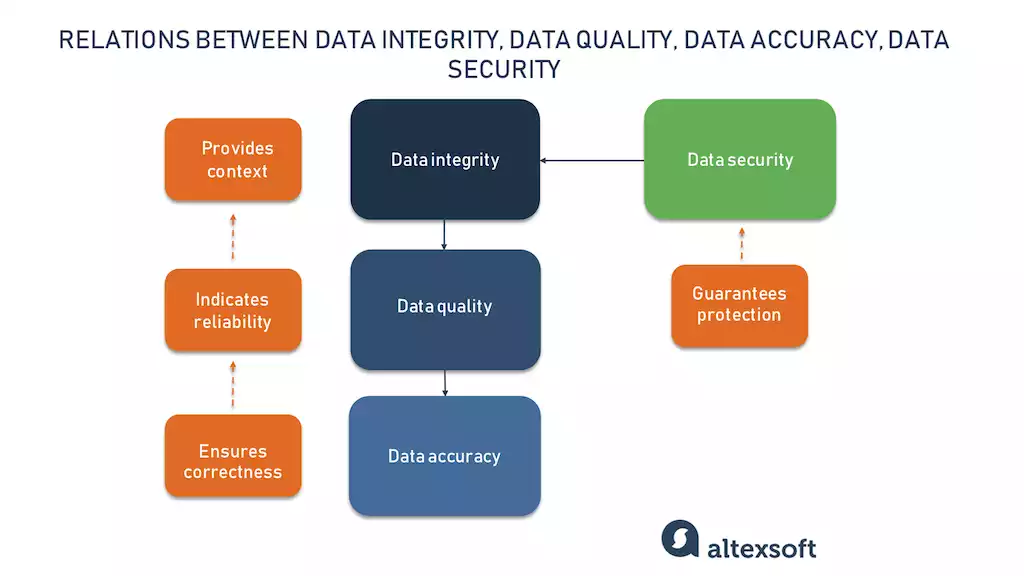In today’s digital landscape, the increasingly prevalent use of encryption in safeguarding sensitive information is a cornerstone of data security. However, despite the robust mechanisms that encryption provides, an insidious question arises: What causes data integrity issues in encrypted systems? Understanding this phenomenon is paramount, as the ramifications of compromised data integrity can be catastrophic.
Data integrity, which refers to the accuracy, consistency, and reliability of data throughout its lifecycle, can be undermined by various factors, even in the most seemingly secure encrypted environments. To explore the labyrinth of potential pitfalls, we must first delve into the technical intricacies involved in data encryption.
Encryption transforms data into a format that is unreadable without a key or password, which is intended to protect information from unauthorized access. However, as powerful as encryption is, it does not inherently guarantee the integrity of the data itself. This leads us to the initial cause of data integrity issues: cryptographic algorithms alignments. If the algorithm used for encryption is flawed or outdated—such as utilizing weak cipher methods like DES or RC4—data can become vulnerable to a myriad of threats. Attackers can exploit these weaknesses to manipulate or falsify data without detection.
Transitioning from algorithm vulnerabilities, we also face the complex issue of key management practices. The cryptographic key serves as the linchpin for encrypting and decrypting data. Poorly managed keys can lead to unauthorized access or, conversely, the loss of access to data altogether. Imagine a scenario where a business encrypts sensitive customer information but fails to secure the keys that unlock this data. The end result? A potential breach in data integrity, where alterations could go unnoticed, leaving a trail of inaccuracies.
Furthermore, the importance of data storage solutions cannot be overstated. Often, encrypted data is stored in a variety of environments, including cloud services, local servers, or external drives. Each storage solution may present unique vulnerabilities. For example, a failure in the storage medium, such as physical wear or corruption, can lead to irreversible data loss or inconsistencies. Moreover, even if the data is encrypted, if the storage solution does not ensure its integrity—through checksums or data validation routines—it poses a risk that encrypted data remains untainted.
In addition to storage concerns, we must also consider the perils of transmission channels. During data transmission between sender and receiver, if encryption protocols such as SSL/TLS are not properly implemented, there can be a risk of man-in-the-middle attacks. In such scenarios, attackers can intercept, manipulate, or alter the data being transmitted without either party being the wiser. This manipulation morphs into an integrity issue, as the data received does not accurately represent what was originally sent.
Moreover, software vulnerabilities also play a pivotal role in diminishing data integrity. Cryptographic systems depend heavily on software to execute encryption and decryption processes. Any bugs or vulnerabilities in this software, which may arise from coding errors, improper configurations, or failure to update to the latest secure versions, can be gateways for attackers to execute malicious code. An attacker could, for instance, craft an exploit that modifies the encrypted data in a subtler manner, subsequently evading detection mechanisms.
As we venture further into this discourse, we encounter the concept of user error. Whether it’s the misconfiguration of encryption settings or mishandling of sensitive data, human error remains a perennial cause of integrity issues. Users may inadvertently expose sensitive information through carelessness, such as sharing keys in unsecured environments or using predictable passwords. A misconfigured application could render data encryption ineffective, thereby leaving the information susceptible to alterations or deletions without adequate tracking.
In addition to human error, it is essential to contemplate the influence of third-party dependencies in encrypted systems. Many organizations utilize a suite of third-party software and services to enhance their systems’ functionality. When these third parties are compromised or when they operate with their own vulnerabilities, the security of the primary system may fall into jeopardy. This is particularly concerning regarding data integration and sharing, as trusting external entities can introduce unforeseen integrity challenges.
Lastly, the specter of regulatory compliance acts as both a shield and a sword. While recognition of data privacy laws, such as GDPR or CCPA, encourages stringent data protection practices, non-compliance or poor adherence to these regulations can also spawn integrity issues. Organizations that do not implement requisite checks may find themselves unwittingly compromising data integrity while navigating the complex terrain of legal obligations surrounding data handling.
As the digital realm continues to evolve, organizations must adopt a multifaceted approach to mitigating data integrity issues within encrypted systems. This includes selecting robust cryptographic algorithms, ensuring effective key management, vigilant software maintenance, training users on best practices, and critically evaluating third-party vendors. Only through a comprehensive understanding and proactive defense can organizations hope to uphold data integrity in an era where digital trust hangs by a thread.








Leave a Comment